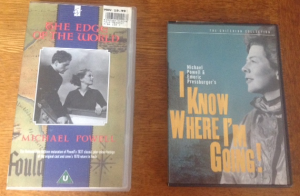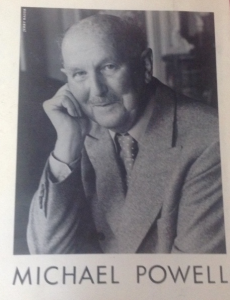“Prosecutors sent tremors through rural Hunterdon County when they announced a sweeping indictment of the local Republican sheriff and her two deputies in 2010. The 43-count grand jury indictment read like a primer in small-town abuse of power. It accused Sheriff Deborah Trout of hiring deputies without conducting proper background checks, and making employees sign loyalty oaths. Her deputies, the indictment charged, threatened one of their critics and manufactured fake police badges for a prominent donor to Gov. Chris Christie. When the charges became public, the indicted undersheriff, Michael Russo, shrugged it off. Governor Christie, he assured an aide, would ‘have this whole thing thrown out,’ according to The Hunterdon County Democrat. That sounded like bluster. Then the state killed the case. On the day the indictment was unsealed, the state attorney general, a Christie appointee, took over the Hunterdon prosecutor’s office. Within a few months, three of its most respected veterans lost their jobs there, including the one who led the case.”
A Power Play Goes Awry
As a blogger whose site is inspired by the look and lore of the George Washington Bridge, aka the Great Gray Bridge, I’m following with great interest the current political scandal unfolding around the administration of New Jersey Governor Chris Christie, who before becoming chief executive of the state was a US Attorney in the state. If you’re just catching up to this bit of tawdry political theater, it seems probable that Christie and minions of his unleashed a vendetta against Mayor Mark Sokolich of Fort Lee, NJ, the small city at the western end of the busy, busy span.
Multiple news reports, including an audio and written piece by WNYC reporter Andrea Bernstein and this NY Times article suggest that the trouble began when Fort Lee Mayor Mark Sokolich, a Democrat, declined to endorse Christie in his recent re-election. Back in September, as the gubernatorial campaign unfolded, local access lanes to the tollbooths approaching the bridge from Fort Lee were closed without explanation. Little notice was given to bridge or Port Authority officials; those who were told anything say they were informed the lane closures were supposedly for a traffic study, a claim that since been debunked. They were also told not to report it or discuss the matter with colleagues. The result, during the first week of public school with traffic peaking right after Labor Day? This is how the Times reports it:
“Cars backed up, the town turned into a parking lot, half-hour bridge commutes stretched into four hours, buses and children were late for school, and emergency workers could not respond quickly to the day’s events, which included a missing toddler, a cardiac arrest and a car driving into a building.”
The person behind the scenes pulling the strings was David Wildstein, a close friend to Governor Christie who has now resigned from his state job, lamely claiming he doesn’t want to be a “distraction.” Beyond that, he declined comment to reporters. Meanwhile, Christie denies any role in the episode. Democrats in the NJ legislature smell a rat. They are subpoenaing officials and holding hearings, trying to get to the bottom of the stupid, petty vendetta against Mayor Sokolich.
A month before Christie’s re-election, which came by a wide margin over his Democratic challenger, the excellent NY Times reporter Michael Powell published a story that should have gotten a great deal more attention than it did. The Quashing of a Case Against a Christie Ally detailed how in 2010 a serious public corruption case against local law enforcement authorities in NJ’s Hunterdon County was halted with no apparent reason and local prosecutors who had prepared the case against County Sheriff Deborah Trout and an underling were fired, on orders that came from a longtime Christie ally in the state government. Having read that story, I’m not at all surprised that Chris Christie may have pulled such a petty stunt as this new one, or countenanced the conduct. Powell’s story includes this paragraph:
“There is no evidence that Mr. Christie ordered the dismissal of the charges against Sheriff Trout. But his attorney general, Paula T. Dow, who had served as his counsel at the United States attorney’s office, supervised the quashing of the indictment and the ouster of the respected prosecutors. Sheriff Trout had political ties to the administration. She led an association of county law enforcement officials that backed the candidacy of Mr. Christie and his running mate, Lt. Gov. Kim Guadagno, who had previously served as sheriff in Monmouth County. Ms. Guadagno and Ms. Trout exchanged chatty e-mails, according to court records. After the election, Ms. Guadagno thanked Sheriff Trout for sending her deputies to work on the campaign. Ms. Trout left office in 2010. But the case and the Christie administration’s role in killing it have surfaced again because one of the dismissed prosecutors, Bennett A. Barlyn, has filed a lawsuit against the state, claiming that the attorney general killed the indictment to protect prominent supporters of the governor. In August, a New Jersey judge ordered the attorney general to release the grand jury records to Mr. Barlyn, who said the records would detail the considerable strength of the now-dead case. The state has appealed the decision. “I was frog-marched out of the prosecutor’s office,” Mr. Barlyn said, ‘because I objected to the dismissal of a viable case against an important local official.’”
As Christie revels in his 30-point win last November and moves ahead with what I expect to be a bid for the 2016 Republican presidential nomination I’m sure there will be efforts to dismiss this affair over the GWB and people will joke about corruption being a common affair in New Jersey. However, I believe that the deliberate instigation of traffic jams on the bridge has a potent resonance that just about everyone can relate to, including people who don’t follow politics closely. I hope that media stay on the climate of casual corruption that has infected the Christie administration.



